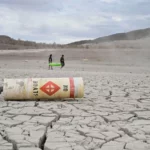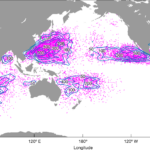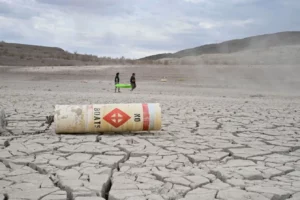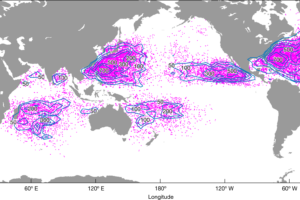Brandon Ford, the National Environmental Policy Act specialist with the private property debris removal team from the U.S. Army Corps of Engineers, Fort Worth District reviews NEPA regulations at the emergency field office on Maui, Sept. 7. Members of the debris team are deployed to Maui as part of the federal response to the Hawai’i wildfires that occurred Aug. 8. USACE is dedicated to minimizing risks to public safety and respecting the people, culture and environment of Hawai’i while working side-by-side with partners to help survivors recover from the wildfires. (U.S. Army photo by Brannen Parrish)\
U.S. Army Corps of Engineers environmental engineers and biologists are working with local, state and federal environmental agencies to develop contract requirements for the debris removal phase of the Hawai’i wildfires emergency response on Maui.
As a federal agency, USACE relies upon National Environmental Policy Act specialists and environmental engineers to comply with federal law. This guidance will help reduce risks to people and the environment on and around Maui during the debris removal stage.
NEPA was signed into law in 1970 and requires federal agencies to assess the environmental effects of their proposed actions prior to making decisions. The law covers a broad range of considerations, including decision making for permit applications, adopting federal land management actions, and constructing highways and other publicly owned facilities.
“Environmental protections under NEPA are built into USACE processes and emergency response missions. NEPA professionals, environmental engineers and contracting officers follow those processes to the letter to minimize risks to an impacted area’s environment,” said Col. Jesse T. Curry, Recovery Field Office commander for the Hawai’i wildfires emergency response. “The Corps of Engineers’ efforts in the Maui recovery mission are a small part of the greater DoD effort, but for USACE, the Recovery Field Office stands as a key node that leverages the Corps’ enterprise capability and interagency cooperation. Here, we can ensure NEPA compliance and protect Maui’s precious environment while recovery efforts continue.”
Biologists and environmental engineers, versed in environmental policy and regulations, coordinate with local, state and federal environmental partners to account for local environmental concerns and incorporate best environmental management practices into debris removal contracts.
“NEPA is at the forefront of all our operations. We can’t do anything unless it complies with NEPA. One of the big things is knowing which resources are here and what we need to protect, and since Hawai’i has vast natural resources, there’s a lot to consider, and it’s a huge part of the culture here,” said Brandon Ford, USACE NEPA specialist assigned to the debris removal team.
During the planning stage, environmental engineers perform baseline environmental assessments and surveys to determine the initial environmental characteristics of debris storage sites and prepare performance work statements for contractors executing debris removal.
“Asking the right questions provides insight into the best approaches for debris containment,” said Anthony Ruby, an environmental engineer with the USACE debris removal team.
“This was a fairly large incident that’s pretty unique so there’s a lot of questions and a lot of moving pieces that you need to start considering as you move through the process,” said Ruby. “Getting it done right matters from a safety standpoint and from a regulatory standpoint. It’s important because we want to ensure the people of Maui are taken care of so that they can recover as fast as possible.”
Source : poh.usace.army.mil











Add Comment